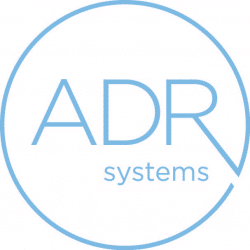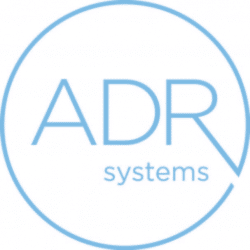The civil jury trial is essential to our legal system. The Constitution’s Seventh Amendment and Article 1, Section 13 of the Illinois Constitution guarantee access to it as a right. But its use is declining.
Over at least the last 20 years, fewer federal cases have been tried, and it is taking longer for those cases to reach trial. Administrative Office of the US Courts data shows that US District Courts completed 2,411 civil jury trials in 2004, 1,922 in 2014 and 1,162 in 2024[1] — all while median time intervals from filing to trial in which trials were completed increased from 23.2 months in 2004 to 27.5 months in 2014 and to 36.2 months in 2024.[2]
The National Center for State Courts’ Court Statistics Project has documented civil jury trial declines as well. Although they reported that state courts in 2023 received over two million fewer “incoming cases” than in 2012 (based on data from 40 states each), their data shows that state courts in 2023 conducted over 700 fewer jury trials than in 2012 – and this despite gathering data from more states in 2012.[3] Moreover, in each year from 2012 to 2023, the Court Statistics Project reported fewer jury trials than were held in 2012, with the project gathering their data for all those years from more states.
Many trends are surely contributing to this decline; however, commentators must seriously consider the simultaneous rise in popularity of alternative dispute resolution (ADR) services. Compared to a civil jury trial, ADR offers an enforceable and more affordable, expedient and customizable way to resolve legal disputes.
ADR Has Expanded in Recent Years
ADR’s rising popularity in recent years is made manifest through increased caseloads and bolstered by the enactment of various federal and state ADR statutes.
More Cases
More parties to disputes are engaging in ADR proceedings to resolve disputes. The number of cases that judges “ordered to ADR” in the US District Court for the Central District of California increased from 2,240 in 2013 to 3,123 in 2023, and cases they “referred to private mediation” increased from 735 in 2013 to 1,607 in 2023. Relatedly, cases that judges in the US District Court for the Eastern District of New York referred to its mediation program increased from 180 in 2000 to 828 in 2022.
ADR providers have also reported caseload increases in recent years, a trend we at ADR Systems can attest to ourselves as a trusted provider of ADR services. The world’s largest ADR provider reported a 7% increase in new cases from 2022 to 2023 and a 10% increase in new cases from 2023 to 2024. The World Intellectual Property Organization (WIPO) Arbitration and Mediation Center has reported year-after-year caseload increases from 2013 to 2022. And the International Centre for Dispute Resolution (ICDR) reported a 25.6% case volume increase from 2021 to 2023.
More Statutes
Since the 1990s, Congress and state legislatures have enacted various ADR statutes to promote and govern ADR proceedings.
In 1996, Congress amended and permanently reauthorized the Administrative Dispute Resolution Act, which “requires … that [federal] agencies adopt a policy on ADR use, designate a dispute resolution specialist, and provide regular training for personnel involved in implementing ADR policy.” And in 1998, Congress passed the Alternative Dispute Resolution Act, which directed federal courts to establish local rules for the use of ADR in all civil actions and encourage its use by litigants.
At the state level, the Uniform Law Commission’s efforts to enact uniform ADR statutes across states has born serious fruit. A complement of 23 jurisdictions have enacted a revised uniform arbitration act since 2000. Since 2001, 13 jurisdictions have enacted a uniform mediation act. Since 2010, 27 jurisdictions have enacted a uniform collaborative law act. And since 2016, eight jurisdictions have enacted a uniform family law arbitration act.
ADR Saves Litigants Time and Money
The costs of litigation are manifold: discovery, motion practice, expert witnesses, court fees and attorneys’ fees. ADR’s appeal to counsel and their clients is, in part, explained by pure economic realities: ADR can help parties resolve disputes more quickly, and it empowers parties to customize the resolution of their dispute in ways that avoid or minimize litigation-related costs.
Less Time
According to a 2022 study, consumers and employees who initiated and prevailed in arbitration spent, respectively, 118 and 56 fewer days on average arbitrating their dispute than those who litigated them. Relatedly, a 2017 study reported that US District Court cases required over 12 months longer to get to trial than cases which were arbitrated privately (24.2 months v. 11.6 months). Unsurprisingly, cases that settle involve even less time. According to one report, 72% of international cases settled before being arbitrated on the merits from 2015 through 2017. They did so a median of nine months after filing with a private ADR provider.
Less Money
Less time in dispute often means less money spent on it. When parties arbitrate disputes, they often follow arbitral rules and procedures designed to limit discovery, limit motion practice, relax rules of evidence and control the duration of the dispute itself by setting timeframes and deadlines for the completion of steps in the arbitration process. Providers, even, have developed rules to expedite the arbitration process in its entirety to save parties time and money. ADR Systems, for example, has developed Accelerated Commercial Arbitration Rules that follow a 60-day filing-to-award timeline. Expedited arbitrations can especially serve the ADR goals of parties to disputes in which the amount in controversy is small, or cases in which parties need a quick resolution to keep a business relationship intact or to keep a time-sensitive project moving ahead. According to that same 2017 study, money spent in association with additional time to trial required for US District Court cases compared with a private provider amounted to approximately $10.9 – $13.6 billion between 2011 and 2015. Put another way, that amounts to more than $180 million per month.
Cost-saving in mediation stems from its timesaving and out-of-court nature. Although parties usually invest in some discovery to accurately valuate a case and build their settlement positions, such discovery often will not need to involve the comprehensiveness necessary for trial – especially if the parties mediate early. Motion practice – unless used as leverage – is minimal. Certain court fees and all trial costs are also obviated. And when the life of the case is in itself likely to be shortened, as previously noted, attorneys’ fees will also often fall. Less time in a dispute means less money needed to resolve it. A 2011 European Parliament report showed that parties to successful mediations can save on average over $8,000. And a 2017 Canadian survey reported that it can cost clients nearly twice as much money to litigate versus mediate a family law case.
ADR Satisfies the Need for a “Day in Court”
Trial gives parties their literal day in court, but ADR does as well by fulfilling parties’ desire to tell their story before a neutral third party and feel they have been heard. Literature on procedural justice evaluations of ADR proceedings call this “voice.” ADR offers litigants many opportunities to use their voices and be heard in proceedings that are more collaborative, flexible and accommodating than the adversarial arena of a jury trial.
Arbitration
Arbitration is an ersatz bench trial, but one that the parties design in an Agreement to Arbitrate and structure through rules they choose and procedures they tailor. Parties’ “day in court” is private, typically confidential and before an arbitrator chosen by them whose task it is to make findings of fact and conclusions of law that decide the case in one side’s favor. This arbitration award is enforceable in court as a judgment, disposing of the matter, and protected against most efforts to vacate or appeal it under the Federal Arbitration Act, which governs most arbitration agreements. Thus, parties to a dispute brought to arbitration enjoy the catharsis of fighting for their case before a qualified, neutral decision-maker in an impartial, trial-like setting which they designed. Moreover, because arbitration is adjudicatory, parties can enjoy the vindication of victory and the closure of finality that they would find in court.
Mediation
Mediation is even less formal than arbitration and thus provides even more opportunities for litigants to use their voice and receive a “day in court” experience. Parties may communicate ex parte with their mediator in mediation, and in Illinois, “mediation communications are confidential to the extent agreed by the parties or provided by other law or rule of this State” unless subject to certain statutes. 710 ILCS 35/8. Therefore, parties are generally free to speak as they feel and be as they are before their mediator, whose task it is to listen and facilitate a settlement in light of what they have been told and are allowed to share with the other side.
Literature on procedural justice evaluations of ADR process has shown that when “authorities [like mediators] provide evidence that they have listened to and considered the views of the parties, and tried to take them into account in thinking about how to respond to the issues, they are viewed as more trustworthy.” This in turn helps parties regard their experience in mediation as fair and just, regardless of whether the case is settled or not.
The Rise of ADR
ADR’s star is rising, and it likely will continue to do so. Civil jury trials are vital to our civil justice system. Without them and the subsequent appeals, developments in common law halt. But the civil jury trial is part of the marketplace of dispute resolution options. With ADR, parties are finding alternative ways to exercise their rights, defend themselves and recover damages in less adversarial, more efficient and more economical ways. ADR is essential to this trend.
ADR Systems, It’s Settled. ®
…………
[1] The Administrative Office of the US Courts collected the reported data here from twelve-month reporting periods ending on September 30th.
[2] Ibid.
[3] 9,030 trials from 18 reported states in 2023 v. 9,757 trials from 14 reported states in 2012




